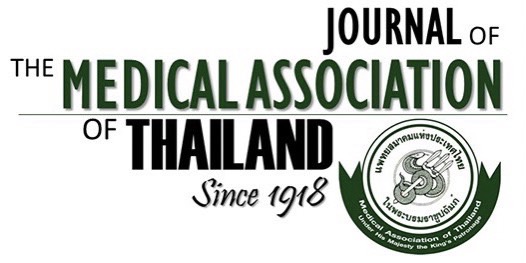Seizure Outcomes and Factors Correlating with Seizure Freedom Following Supratentorial Brain Tumor Surgery
Bunpot Sitthinamsuwan MD, MSc*, Sarun Jotikasthira MD*, Inthira Khampalikit MD*, Chottiwat Tansirisithikul MD*, Ekawut Chankaew MD*, Sarun Nunta-aree MD, PhD*
Affiliation : * Division of Neurosurgery, Department of Surgery, Faculty of Medicine Siriraj Hospital, Mahidol University, Bangkok, Thailand
Background : Seizure is one of common presentations of brain tumor. Surgical resection is helpful for controlling seizure and
for eradication of compression-related symptoms.
Objective : This study aimed to investigate seizure outcomes and the factors that are significantly associated with long-term
seizure freedom after supratentorial brain tumor surgery in patients who had seizure as a clinical manifestation.
Material and Method: This study was conducted in patients with tumor-related seizure who underwent supratentorial
surgery at Siriraj Hospital (Bangkok, Thailand) with complete postoperative follow-up >1 year. Patients were divided into
either the favorable outcome (seizure-free) group or the unfavorable outcome (not seizure-free) group. Collected data
included gender, age, seizure characteristics, neurological manifestations, radiographic characteristics, histopathologic
diagnosis, treatment, preoperative and postoperative antiepileptic drug (AEDs) use, and postoperative seizure outcome.
Results : One hundred and twenty-eight patients (53 males, 75 females) were included, with a mean age at seizure onset of
42.5+16.4 years and a mean age at surgery of 43.7+15.9 years. There were 100 patients and 28 patients in the favorable and
unfavorable groups, respectively. Rate of seizure freedom following surgery was 78%. Factors contributing to seizure-free
outcome in univariate analysis were older age at seizure onset, preoperative seizure duration <15 months, preoperative
seizure frequency <1 episode/month, absence of cortical involvement, presence of hydrocephalus, tumor of non-glial origin,
tumor of meningeal origin, absence of postoperative seizure, gross total resection, and lower number and shorter duration
of postoperative use of AEDs. In multiple regression analysis, preoperative seizure frequency <1 episode/month, absence of
postoperative seizure, and lower number of postoperative AEDs were found to be factors significantly associated with
postoperative seizure freedom.
Conclusion : In this study, 78% of patients with brain tumor became seizure-free after surgery. Independent factors significantly
correlated with seizure-free outcome included rarely occurring preoperative seizure, absence of postoperative seizure, and
number of AEDs used after surgery. These results indicate that strict control of preoperative seizure, early surgical intervention,
and total resection of the tumor increases the likelihood of postsurgical seizure freedom.
Keywords : Seizure outcome, Seizure freedom, Supratentorial brain tumor, Brain tumor surgery, Factor



